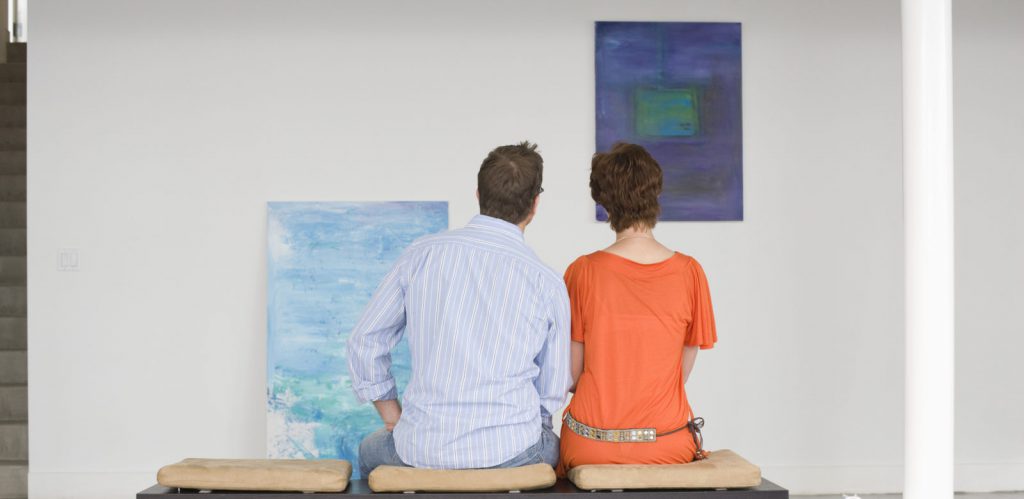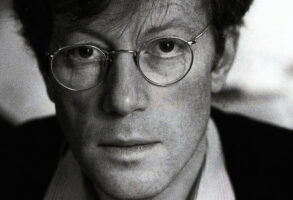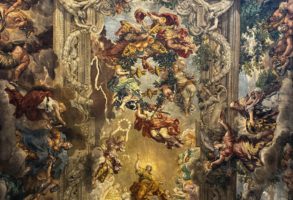
Published December 19, 2014
The world of art, I have suggested, is full of fakes. Fake originality, fake emotion and the fake expertise of the critics – these are all around us and in such abundance that we hardly know where to look for the real thing. Or perhaps there is no real thing? Perhaps the world of art is just one vast pretence, in which we all take part since, after all, there is no real cost to it, except to those like Charles Saatchi, rich enough to splash out on junk? Perhaps anything is art if someone says that it is. “It’s all a matter of taste,” they say. But is there nothing to be said in reply? Do we have no way of distinguishing true from false art, or saying why art matters and how? I shall make a few positive suggestions.
First, however, we must ignore the factors that distort our judgment. Paintings and sculptures can be owned, bought and sold. Hence there is a vast market in them, and whether or not they have a value, they certainly have a price. Oscar Wilde defined the cynic as the one who knows the price of everything and the value of nothing. And the art market is inevitably run by cynics. Utter trash accumulates in our museums largely because it has a price tag. You cannot own a symphony or a novel in the way you can own a Damien Hirst. As a result there are far fewer fake symphonies or fake novels than there are fake works of visual art.
Things are distorted too by the channels of official patronage. The Arts Council exists to subsidise those artists, writers and musicians whose work is important. But how do bureaucrats decide that something is important? The culture tells them that a work is important if it is original, and the proof that a work is original is that the public doesn’t like it. Besides, if the public did like it, why would it need a subsidy? Official patronage therefore inevitably favours works that are arcane, excruciating or meaningless over those that have real and lasting appeal.
For many artists and critics, beauty is a discredited idea. It denotes the saccharine sylvan scenes and cheesy melodies that appealed to Granny. The modernist message, that art must show life as it is, suggests to many people that, if you aim for beauty, you will end up with kitsch. This is a mistake, however. Kitsch tells you how nice you are. It offers easy feelings on the cheap. Beauty tells you to stop thinking about yourself, and to wake up to the world of others. It says: “Look at this, listen to this, study this – for here is something more important than you.” Kitsch is a means to cheap emotion. Beauty is an end in itself. We reach beauty through setting our interests aside and letting the world dawn on us. There are many ways of doing this, but art is undeniably the most important, since it presents us with the image of human life – our own life and all that life means to us – and asks us to look on it directly, not for what we can take from it but for what we can give to it. Through beauty, art cleans the world of our self-obsession.
Our human need for beauty is not something that we could lack and still be fulfilled as people. It is a need arising from our moral nature. We can wander through this world, alienated, resentful, full of suspicion and distrust. Or we can find our home here, coming to rest in harmony with others and with ourselves. And the experience of beauty guides us along this second path. It tells us that we are at home in the world, that the world is already ordered in our perceptions as a place fit for the lives of beings like us. That is what we see in Corot’s landscapes, Cezanne’s apples, or Van Gogh’s unlaced boots.
This brings me to my second important word – form. The true work of art is not beautiful in the way an animal, a flower or a stretch of countryside is beautiful. It is a consciously created thing, in which the human need for form triumphs over the randomness of objects. Our lives are fragmented and distracted – things start up in our feelings without finding their completion. Very little is revealed to us in such a way that its significance can be fully understood. In art, however, we create a realm of the imagination, in which each beginning finds its end, and each fragment is part of a meaningful whole. The subject of a Bach fugue seems to develop of its own accord, filling musical space and moving logically towards closure. But it is not an exercise in mathematics. Every theme in Bach is pregnant with emotion, moving with the rhythm of the listener’s inner life. Bach is taking you into an imagined space, and presenting you, in that space, with the image of your own fulfilment. Likewise Rembrandt will take the flesh tints on an ageing face and show how each one captures something of the life within, so that the formal harmony of the colours conveys the completeness and unity of the person. In Rembrandt we see integrated character in a disintegrating body. And we are moved to reverence.
Formal perfection cannot be achieved without knowledge, discipline and attention to detail. People are slowly beginning to understand this. The illusion that art flows out of us, and that the only purpose of an art school is to teach us how to open the taps, is no longer believable. Gone are the days when you can make a stir by wrapping a building in polystyrene like Christo or sitting in silence at a piano for four minutes and 33 seconds like John Cage. To be really modern, you must create works of art that take modern life, in all its disconnectedness, and bring it to fullness and resolution, as Philip Larkin did in his great poem “The Whitsun Weddings”. It is fine for a composer to lard his pieces with dissonant sounds and cluster chords like Harrison Birtwistle, but if he knows nothing of harmony and counterpoint the result will be random noise, not music. It is fine for a painter to splash paint around like Jackson Pollock, but the real knowledge of colour comes through studying the natural world, and finding our own emotions mirrored in the secret tints of things, as Cezanne found peace and comfort in a dish of apples.
In the face of sorrow, imperfection and the fleetingness of our affections and joys, we ask ourselves: “Why?” We need reassurance. We look to art for the proof that life in this world is meaningful and that suffering is not the pointless thing that it so often appears to be, but the necessary part of a larger and redeeming whole. Tragedies show us the triumph of dignity over destruction and compassion over despair. In a way that will always be mysterious, they endow suffering with a formal completion and thereby restore the moral equilibrium. The tragic hero is completed through his fate. His death is a sacrifice, and this sacrifice renews the world.
Tragedy reminds us that beauty is a redemptive presence in our lives. It is the face of love, shining in the midst of desolation. We should not be surprised that many of the most beautiful works of modern art have emerged in reaction to hatred and cruelty. The poems of Akhmatova, the writings of Pasternak, the music of Shostakovitch – such works shone a light in the totalitarian darkness, and showed love in the midst of destruction. Something similar could be said of Eliot’s Four Quartets, of Britten’s War Requiem, of Matisse’s chapel at Vence.
Modernism arose because artists, writers and musicians held on to the vision of beauty as a redemptive presence in our lives. And that is the difference between the real work of art and the fake. Real art is a work of love. Fake art is a work of deception.
— Roger Scruton is a senior fellow of the Ethics and Public Policy Center








